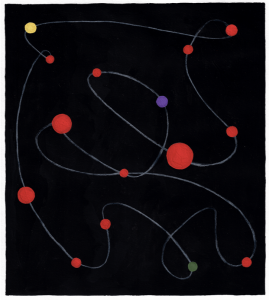- As the Museum of Childhood opens its War Games exhibition, Stephanie Kukulka finds out why space toy ray guns and Spitfire planes are not just for children
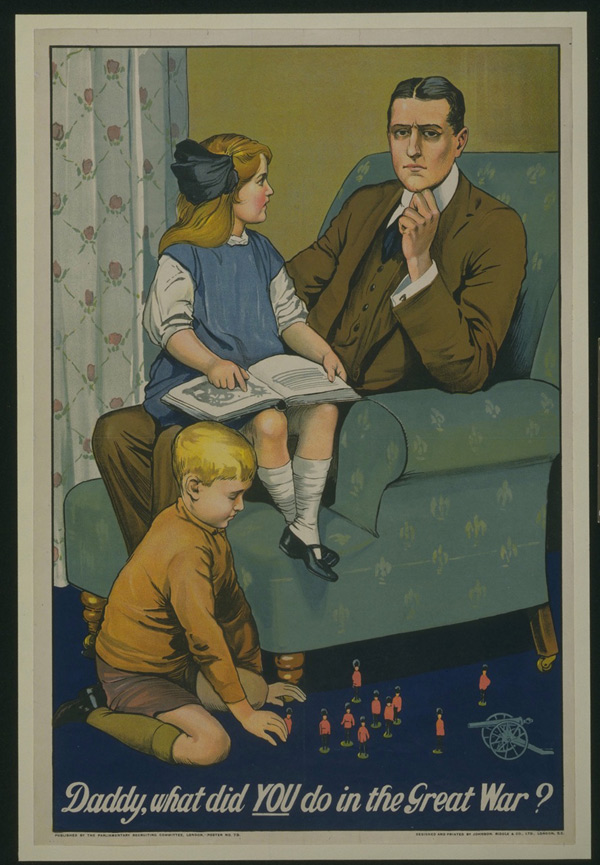 A poster dated 1915 shows a young boy playing with lead soldiers, kneeling besides his despondent father, whose daughter sits proudly upon his lap asking –“Daddy, what did you do in the Great War?” This is one of many British World War I propaganda posters convincing fathers to conscript, employing guilt to enforce a sense of patriotism. As a pivotal point, this poster highlights the role children have played in the social encouragement of war, and beckons the theme for this exhibition.This summer, Bethnal Green’s V&A Museum of Childhood will play host to War Games, a cross-generational exhibition exploring how warfare has been socially indoctrinated – in its various forms – throughout modern history, from an early age. We spoke with curator Sarah Wood about the exhibition, “how the adult world has impinged on the lives of child’s play… its morality in brainwashing our children and training them military techniques.”
A poster dated 1915 shows a young boy playing with lead soldiers, kneeling besides his despondent father, whose daughter sits proudly upon his lap asking –“Daddy, what did you do in the Great War?” This is one of many British World War I propaganda posters convincing fathers to conscript, employing guilt to enforce a sense of patriotism. As a pivotal point, this poster highlights the role children have played in the social encouragement of war, and beckons the theme for this exhibition.This summer, Bethnal Green’s V&A Museum of Childhood will play host to War Games, a cross-generational exhibition exploring how warfare has been socially indoctrinated – in its various forms – throughout modern history, from an early age. We spoke with curator Sarah Wood about the exhibition, “how the adult world has impinged on the lives of child’s play… its morality in brainwashing our children and training them military techniques.”
“This exhibition’s been quite a challenge” Sarah says, “we’ve had to learn about the complexity of play theory, as well as the entire world’s history of warfare!” Divided into four sections, Playing at War, On the Battlefield, Reality to Fantasy, and Secret Weapons, the exhibition draws on a vast collection of European, British, and American toys, some of which are loaned from the Spielzeugmuseum in Nuremberg and London’s Imperial War Museum, amongst others.

- Playing at War focuses on role-playing war games – toys, costumes and strategies. Of particular pertinence, is also the delineation of social appropriateness for boys versus girls to engage in various war-themed games (and how this is evolving up to the present) in a section on gender roles. Included is a personal image shot by photographer Morgan White of his daughter, dressed-up in army apparel, equipped with a stick-gun and army hat. Titled Mum wouldn’t let me play with guns, so I made my own (2010), the image forces the viewer to question the notion of girls playing with “guns”, and a typically male-identified activity.
Right: Mum wouldn’t let me have toy guns, so I made my own, 2010. Morgan White. Courtesy Four Corners
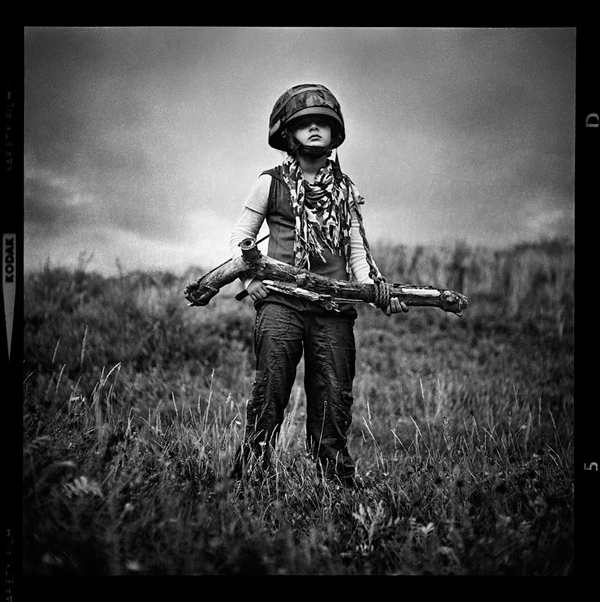

- On the Battlefield follows with an interactive shooting gallery – sandbags, rifles, and distant targets. More poignantly, its extensive timeline shows the chronological development of warfare alongside the history of toy design, punctuated by examples like a Japanese atomic manual dexterity toy from the late 1940s, which had the child maneuvering three marbles into the holes targeted at Hiroshima, Nagasaki and Tokyo. “This is one of the most toxic objects in the exhibition,” Sarah says, “but probably one of the smallest… many things really surprised me during my research.”
Right: Toy soldier set, German army medical services, 1936


 Above: Space toy ray gun, 1960
Above: Space toy ray gun, 1960Sparked by the West’s growing fear of nuclear armageddon, and fascination with futuristic technology, Reality to Fantasy takes at the look at the shift from war toys to space games with the onset of the Cold War. From mid 60s, as popular support for the Vietnam War began to wane in America, superheroes, aliens and mutants fought intergalactic battles in thinly-veiled allegorical embodiments of the Cold War tensions between the USSR and USA. Toy ray guns and cosmic zappers appeared on the market. In contrasting, popular interest in medieval wars (and “honourable battles” fought against the Nazis, where good and evil were more palatably distinguished) also emerged, an alternative expression of this desire to move towards, simplistic ideologically driven toys. This legacy outlasted the Cold War period, with the onset of the 90s and the popularity of TV shows such as The Power Rangers.

- The exhibition brings forth a number of alarming and interesting realities – the presence of army recruitment advertisements in children’s comic books, and the active endorsement of armed forces in the design and manufacture of children’s war figurines, such as the H.M. Armed Forces toys, and Corgi’s toy missile, modeled and released on the market two years after the first real missile launcher was developed by the United States in the 1950s. Curating the exhibition has been an intensely personal experience for Sarah, whose proximity means “I’ve almost become immune to their toxicity.” Speaking philosophically, she adds (perhaps unsurprisingly), “If I had children, my reserve would be about the type of toy it is. I would rather a child play a game with creative opportunity, such as sticks, or Lego”. The debate now open, she concludes, “we know that the exhibition will cause controversy, but we’re up for the challenge.”
Images courtesy
and copyright of
V&A MuseumWar Games will be showing at the V&A Museum of Childhood from 25 May 2013 – 9 March 2014. Visit their website here for more information
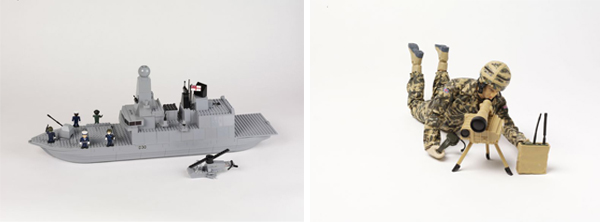
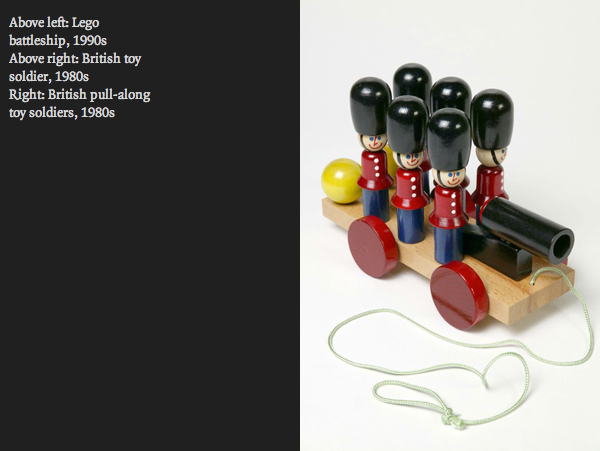
Subscribe to Port Magazine annually and receive each issue to your door.
Get PORT in print
